Geek Articles
A Brief History of Early Lenses: Part 1
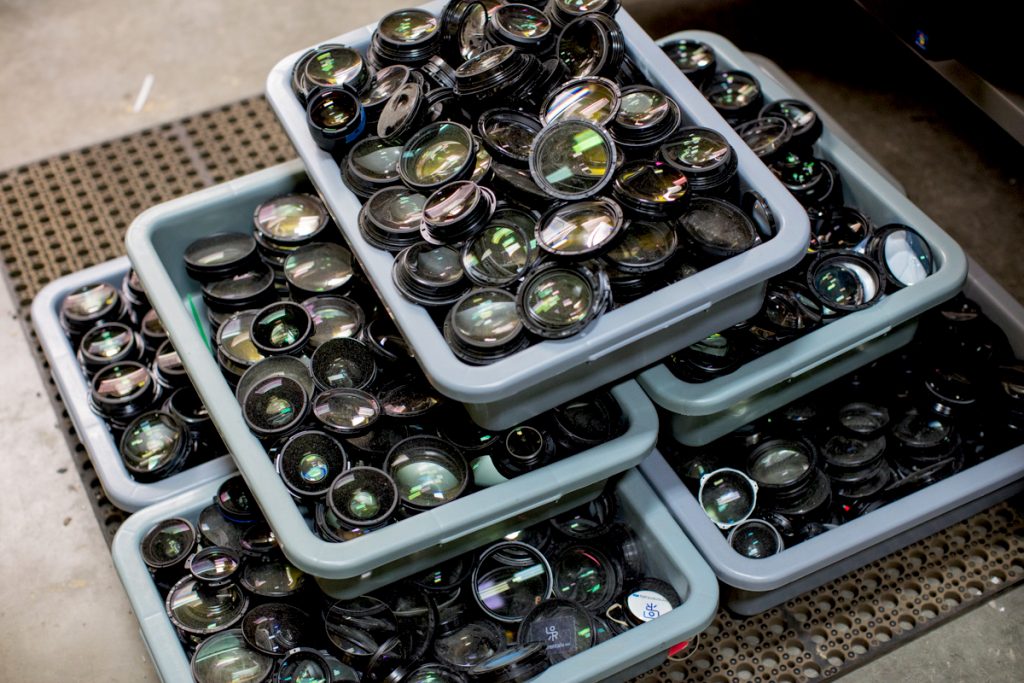
Things Have Been Around Longer Than You Think
We are all recent-centric. We tend to think the technology we use didn’t exist until last year or so, even though the roots of it go way back. Phone apps are a great example. I have a dozen little apps on that phone that do things like calculate depth of field, mortgage payments, and when it will be high tide. A lot of my friends don’t realize there were apps way before there were smartphones. Way before electricity even.
Apps date back to the 1300s, they just looked different. They were made of several paper discs that created an analog computer, called volvelles. You could rotate the discs to do various calculations: math, determine the positions of the stars and planets, convert measurements, etc.
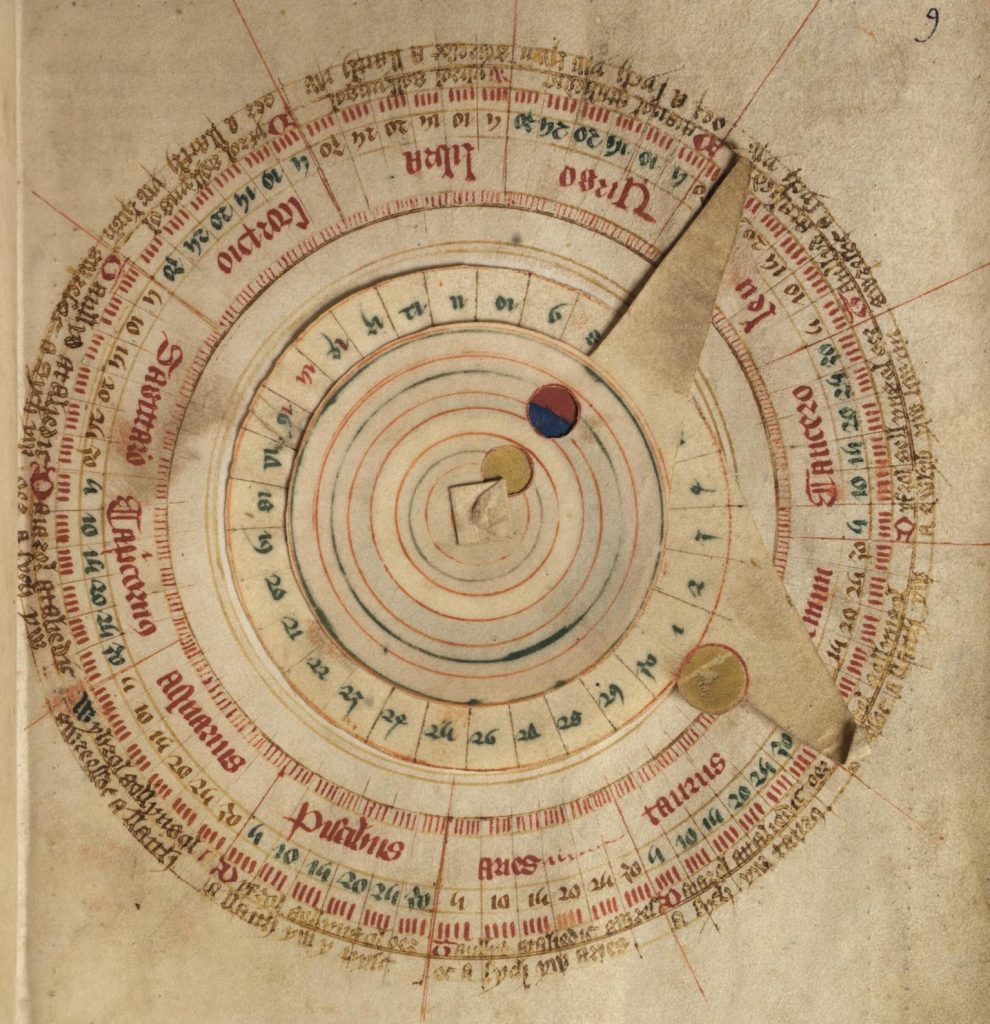
Pre-smart-phone, photographers carried around exposure wheels; a volvelle calculator for ISO, aperture, and shutter speed. (You can download one to print if you want.) Even today volvelles are used for things like color wheels and some special calculators just because they’re simple. The “Effects of Nuclear Weapons” calculating volvelle is one of my favorites.

Most of you are wondering what in the world this has to do with lenses. Nothing, really. It’s just an example that the very newest things are often just old things repackaged in modern technology. In this next series of articles, I’m going to show you that if you have ever used a lens, its basic design probably dates back to the 1800s. There are a couple of exceptions, but even those date back to the 1920s.
Lenses Before Cameras
From the moment there were cameras, photographers wanted lenses with the same characteristics they want today: sharper with wider apertures and fewer aberrations. As I’ve mentioned in my last post on DPReview, lens making was a big business well before photography. A simple biconvex lens was used in the first camera obscuras, but the field curvature of such a lens is so severe that only the center of the image is in focus. In 1812, W. H. Wollaston found that a meniscus-shaped lens provided a flatter field and less distortion, and it rapidly became the lens of choice for the camera obscuras of the time. Achromatic doublets were common, although mostly used in microscopes and telescopes.
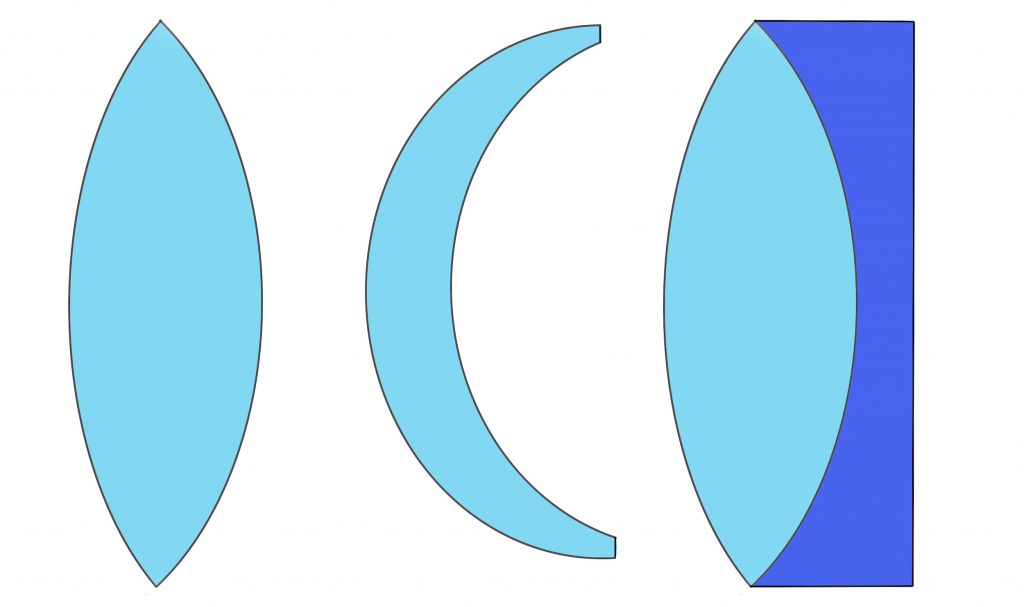
The three original lens types: (l to r) a simple lens, a meniscus, and an achromatic doublet.
The First Camera Lenses
Wollaston’s meniscus, while fine for a camera obscura, suffered from horrid longitudinal chromatic aberration and was of very small aperture, leading to long exposure times. Charles Chevalier (Daguerre’s lens maker) found that a reversed achromatic doublet lens produced an acceptable image with much less chromatic aberration. In 1839, he modified the achromatic doublet with a slight meniscus shape, and that lens, known as the French Landscape Lens, was sold with almost every early Daugerreotype camera.
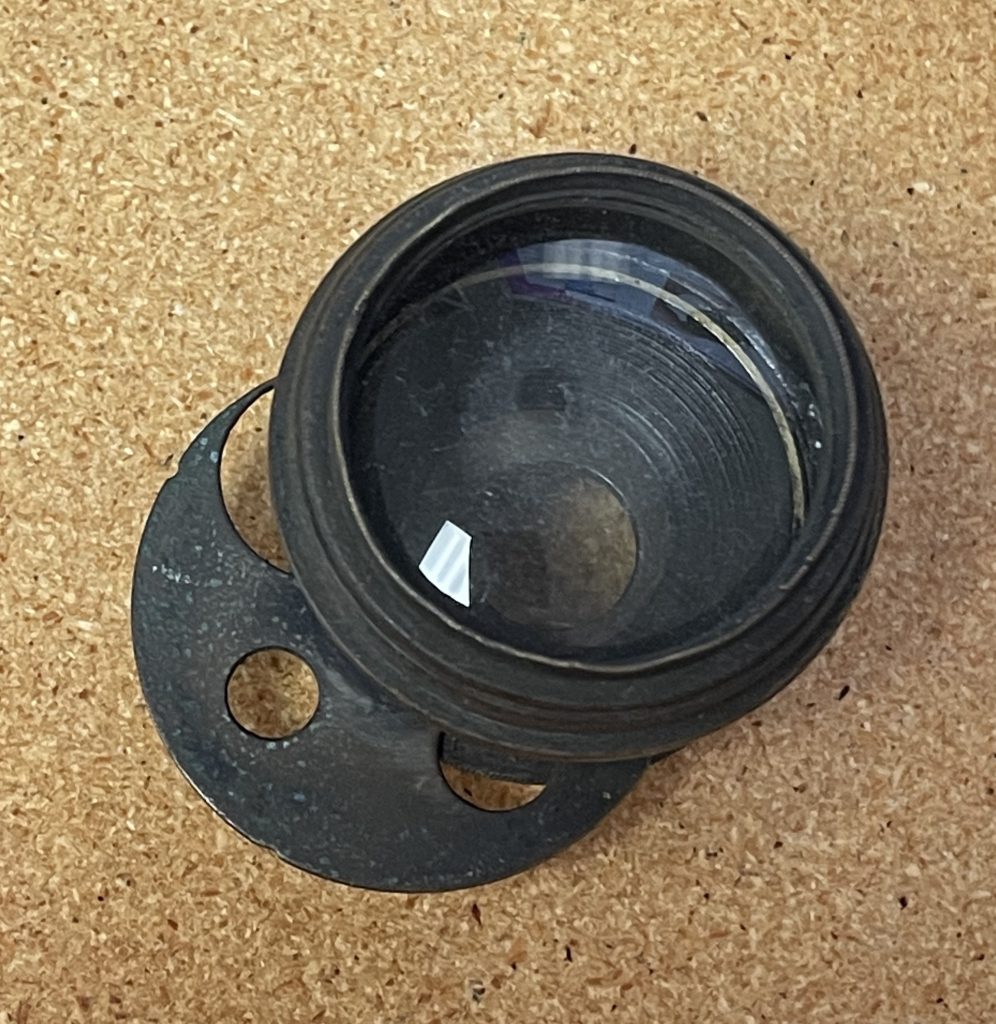
A French Landscape Lens. This later copy uses an aperture wheel, so it probably dates the lens to the 1870-1880 range.
Soon after cameras were released, lenses improved. Chevalier created his “Photographe a Verres Combines” lens, which gave an f/6 aperture and could be extended to change the focal length. Jozef Petzval discovered the mathematical formula that describes spherical curvature in a lens, and formulas for refraction and certain aberrations. He developed the Petzval Portrait Lens, which used separated rear elements to correct for spherical aberration and coma.
He also designed a landscape lens called the Dialyte, which Voigtlander stole and produced as the Orthoskop. Again, the rear element was separated, giving the designer more refractive surfaces to correct aberrations.
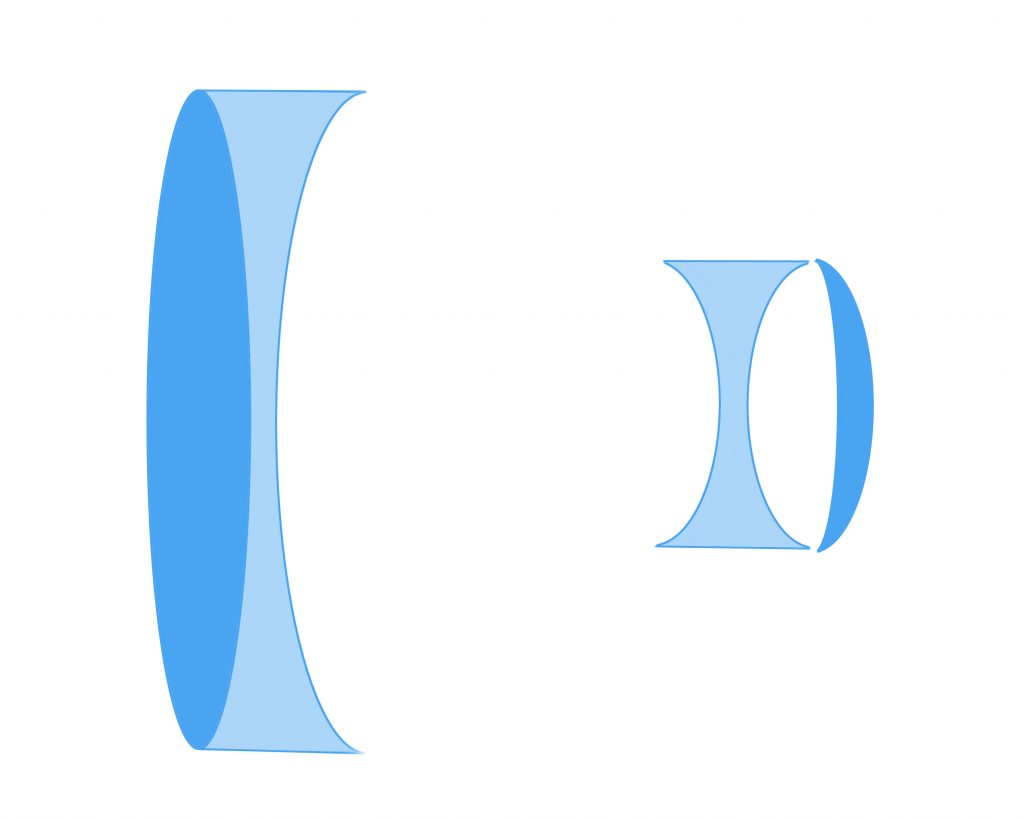
These were the first great lens advances. Chevalier’s and Petzval’s lenses demonstrated that additional elements could gather more light. The Petzval lens also demonstrates that adding additional air-glass interfaces (rather than cementing the elements together) allowed the correction of more aberrations, increasing sharpness. Petzval-type lenses remained in widespread use through the 1920s, and are still manufactured today.
The Next Great Advance
The biggest demands of the 1860s were for wide-angle landscape lenses. Nothing (other than pornography) sold as well as landscape pictures of exotic places, whether in books, prints, postcards, or the new-fangled 3-D viewers. Photographers of the day could overcome small apertures to some degree, but the severe lens distortion was an issue and they wanted wider-angle lenses for more scenic shots.
This was solved by the great lens-design advance of the 1850s: symmetry. Designers found that symmetrical elements mirroring each other on either side of the aperture corrected distortion, coma, and lateral chromatic aberration to a large degree. Despite Petzval’s use of mathematical lens design, symmetry was largely discovered by old-fashioned trial and error.
Enter the Globe
Thomas Sutton, an Australian inventor living in England, noticed the wide angle of view he saw when looking through a water-filled snowglobe. Since he was into photography, he designed a lens that actually was a water-filled globe. It had about an f/30 aperture and theoretically a 100-degree field of view (about 15mm equivalent in full-frame focal length), but the vignetting was so severe that it was really limited to about 60 degrees.
The design absolutely eliminated coma and astigmatism. Unfortunately, it had severe spherical and chromatic aberrations. To make it functional, Sutton designed a system that placed photosensitive paper between two cylindrical glass plates; basically creating a curved sensor.
Let me repeat that for those of you who want to join the ‘everything old is new again’ club. He used a curve sensor to reduce aberrations. In 1860.
The obvious name for this lens would, of course, be the Globe Lens or The Water Globe Lens, or something similar. But Sutton decided that The Sutton Panoramic Camera System would be much catchier, and it was marketed under that name. An English lens maker, Thomas Ross, manufactured and sold the camera-lens combination, and it enjoyed a bit of popularity for a while.
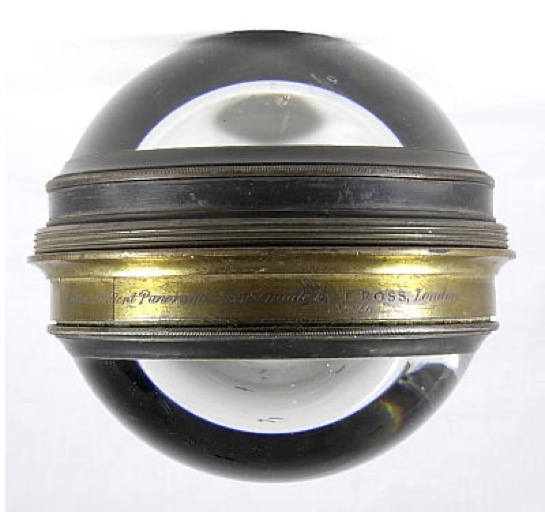
As an aside (and you know I love my asides) Sutton became famous not because of his lens, but because he worked with James Clerk Maxwell to make the first color photograph in 1861. Sort of. He took three separate images of a piece of Tartan ribbon, each with a different color filter. The three negatives were then projected through three projectors (yes, they had projectors, called magic lanterns back then), each with the appropriate color filter. If you got the projectors all lined up and focused just right, you could see the color image reproduced below.
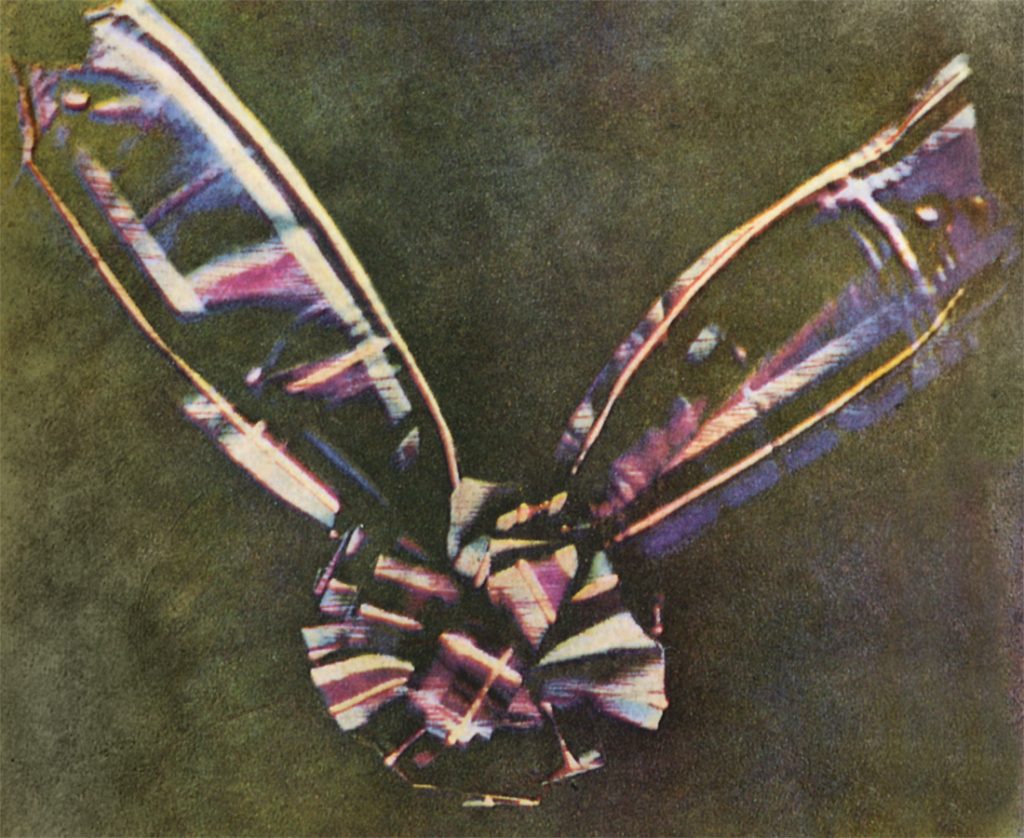
Meanwhile, Back in America
At about the same time, a couple of Americans, Harrison and Schnitzer, took the globe idea but eliminated the water (and most of the globe for that matter). The lens consisted of two achromatic doublet meniscus lenses, but the outer surfaces of each would fit the surface of a theoretic sphere. It wasn’t a complete globe anymore, just two pieces of a globe.
This is a great example of ‘seems logical but doesn’t matter’. The fit-a-globe idea made perfect sense to Sutton and Harrison, but it made no difference optically. The original lens had problems with reflections creating ghost images which were resolved by shortening the airspace between the elements, so the actual production lens didn’t fit a spherical curve anymore.
Since the lens didn’t fit the surface of a globe, they called it The Globe Lens, of course. After Schnitzer passed away, Harrison couldn’t help himself and started calling it the Harrison Globe lens. The Globe Lens provided an 80-degree angle of view (equivalent to 20mm or so on a full-frame camera) with low distortion and good sharpness. But the apertures were small, about f/30, and the lens had a lot of astigmatism.
A very similar (and actually better) lens, the Pantoskop, was designed and marketed by Emil Busch in Germany. These lenses were THE wide-angle lenses of the 1860s, because they were the only wide-angle lenses. They drifted into obscurity by the turn of the century when the good stuff came along.
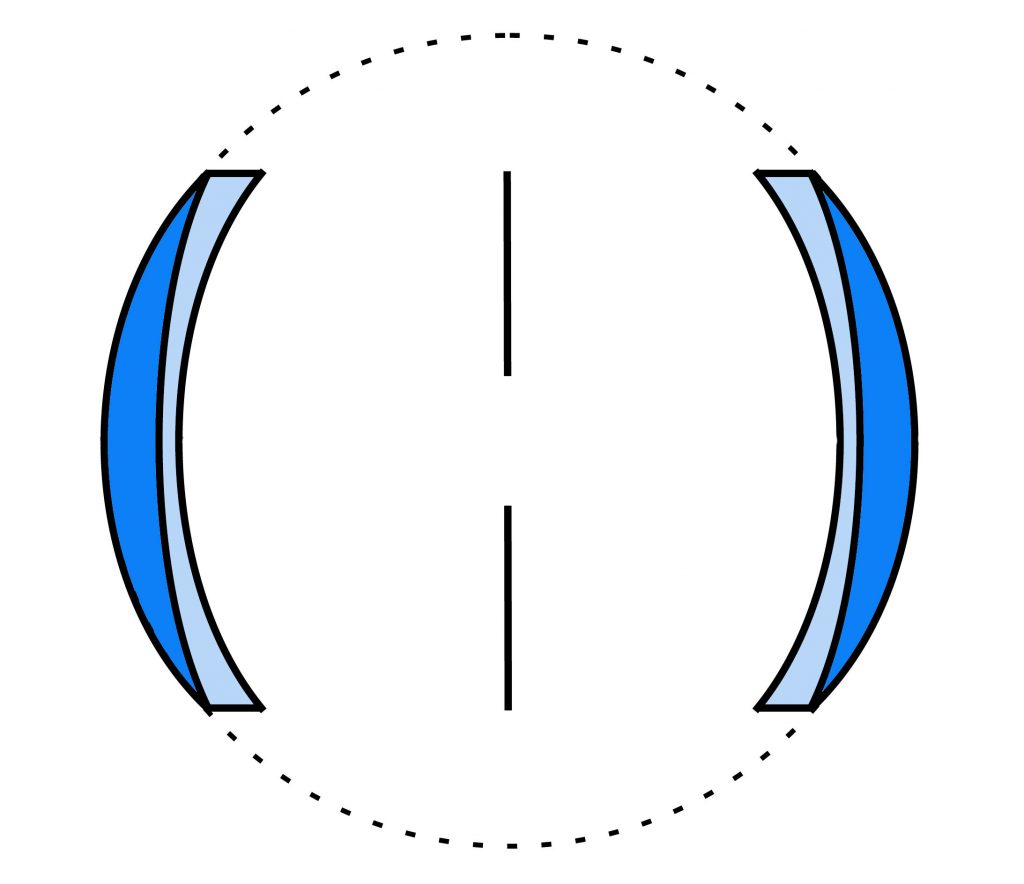

The Rapid Rectilinear Lens
Two separate lensmakers, John Dallmeyer in England and Dr. H. A. Steinheil in Germany, both came up with a better wide-angle lens around 1866. The lenses used two doublets of different refractive power but similar dispersive power, placed symmetrically around a central stop (light baffle). All the elements were meniscus-shaped with the positive elements in the center and negative elements away from the center. (The Globe lens had the order of those elements reversed.)
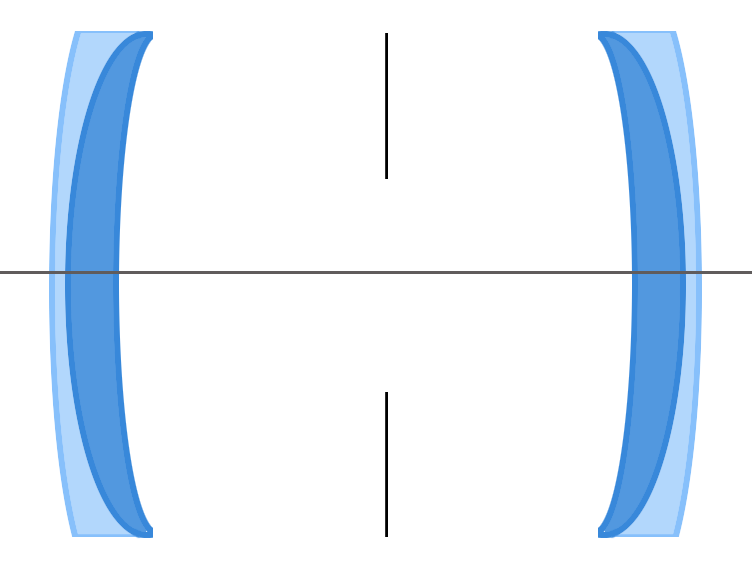
Steinheil had a doctorate degree and had worked with von Seidel (the physicist who had documented the different types of lens aberrations). He had designed his lens mathematically, so he was certain Dallmeyer had stolen his ideas and fired off the ritual (for the time) letters, lawsuits, and press releases calling out Dallmeyer as a thief.
Dallmeyer had learned lensmaking from Thomas Ross (who made Sutton’s Globe lens), married Ross’s daughter, and inherited the company. Dallmeyer had experimented with various combinations and hit on the same idea through practical experience that Steinhill had discovered through precise calculations. Both of them received patents and manufactured and marketed their lenses. (Dallmeyer perhaps a bit more successfully probably because Rapid Rectilinear is a much cooler name than Aplanat).
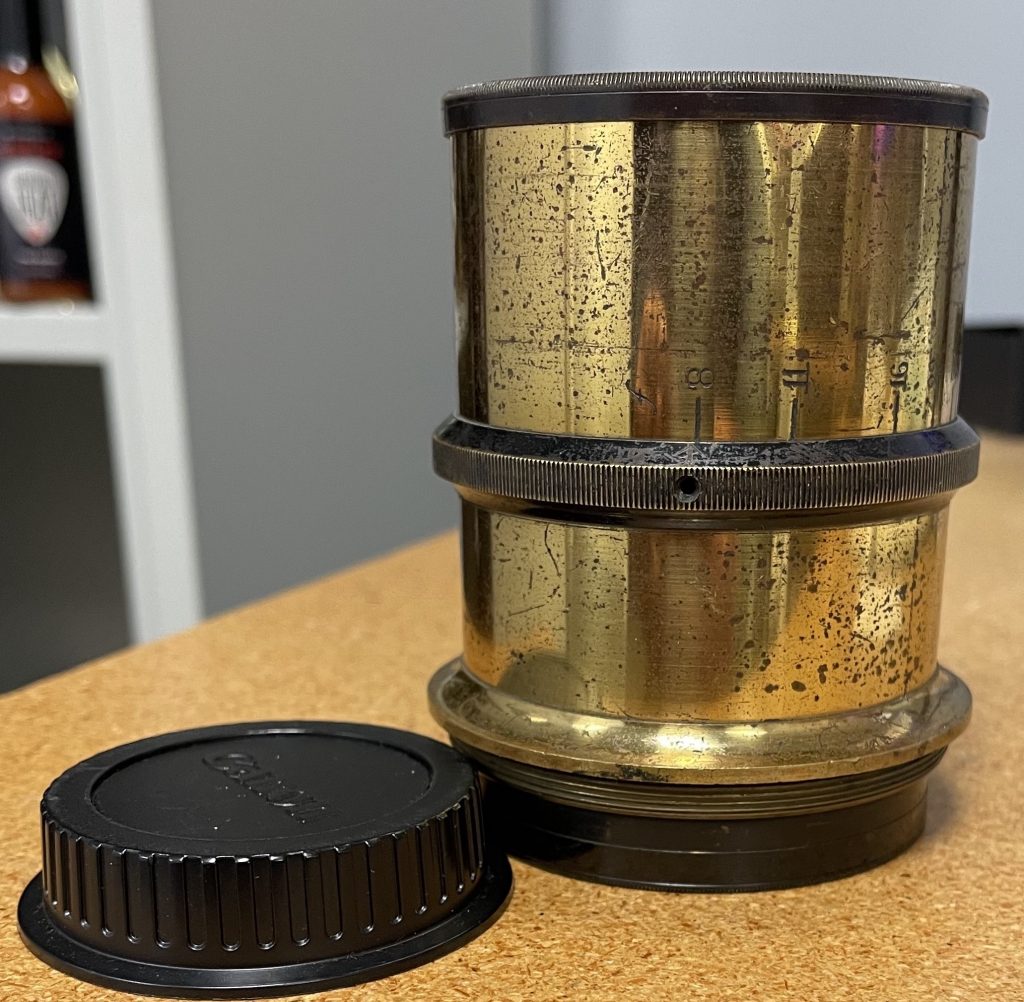
Both Dallmayer’s Rapid Rectilinear and Steinhill’s Aplanat were hugely popular. By changing the composition of the glass used in the elements and the distance between them, the lenses could be made wide-angle, standard focal length, or even a short telephoto. In all forms, it was remarkably free of distortion and had a fairly wide (f/6 to f/8) aperture. It remained in production, under numerous names, for nearly 60 years.
The Rapid Rectilinear Lens demonstrated that symmetrical doublets around a central stop were nearly free from distortion, had a reasonably flat field, and could be used at a fairly wide aperture. It was arguably the most important lens advance since Petzval. But, at least in the long term, it wasn’t the most important lens developed during this period.
The Double Gauss Lens
There was one other important lens that came out prior to 1890, although it wasn’t very popular at first; the double Gauss lens. Gauss was a famous mathematician in the early 1800s who described a novel telescope lens made up of two meniscus-shaped lenses, partly separated by an air space. Mathematically, he knew that such a lens would have no chromatic aberration. That was true, but otherwise, it was a fairly poor lens and quite difficult to make.
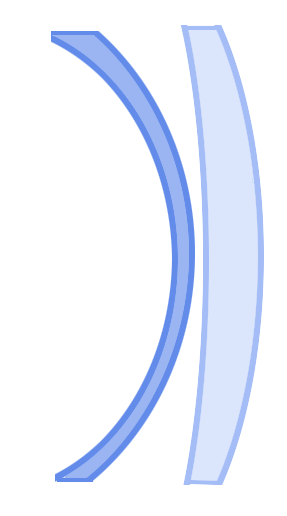
In 1888, an American, Alvin Clark, decided if one Gauss type lens was bad and expensive, putting two together around a central stop (like the Rapid Rectinear and Globe designs) would probably be a brilliant idea (he was American, after all, so doing things the hard way didn’t faze him). He patented the double Gauss Lens which was marketed by Bausch and Lomb for a few years before being quietly dropped.
In its natural straight, the double Gauss lens had a lot of astigmatism and oblique spherical aberration. Like most other lens designs of the day, the available optical glass just wasn’t up to the task and the lens really offered nothing positive other than the cool double Gauss name.
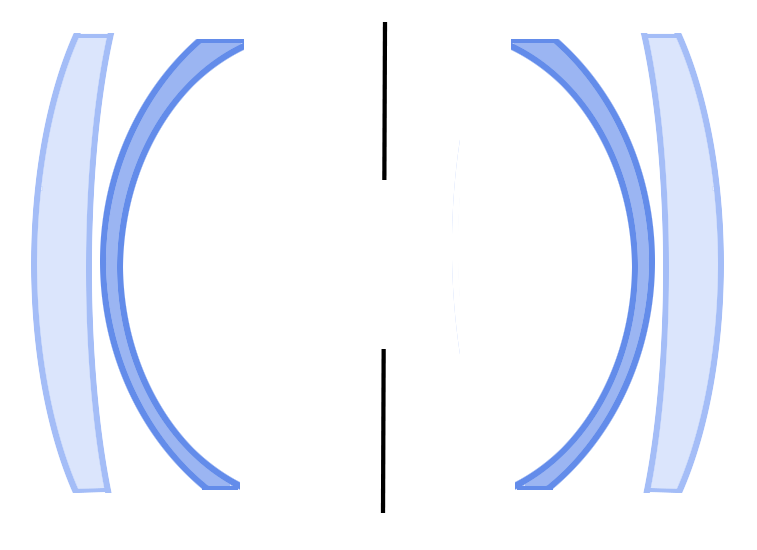
With better glass and lens-making techniques, though, the double Gauss design was dramatically improved. The better glass came from Erst Abbe and Otto Schott, who turned their work into ownership of Schott Glassworks and Zeiss AG (at the time mostly a maker of microscope lenses). Zeiss hired Dr. Paul Rudolph. (I often refer to Michael Jordan as the Paul Rudolph of basketball.)
Rudolph modified the double Gauss design by changing the center element to a thick cemented pair and reducing the air space between the center and outer elements. The cemented surface of the pair could be curved to correct both astigmatism and spherical aberration. He named the lens the Planar and it was released by Zeiss in 1896. The Planar was a remarkably good lens design. At f/4.5 aperture, the Planar was very wide-aperture for the time. It had excellent control of aberrations, with far less astigmatism and spherical aberration than any other lens of the day. It had a very flat field with low distortion (hence the name). Plus, it could be easily modified into a variety of focal lengths.

Modified double Gauss designs were the basis of most wide-aperture and standard focal length prime lenses for nearly a century. Taylor-Hobson made the Opic, a modified double Gauss design with apertures as wide as f/2 in the early 1900s; the first truly wide-aperture lens. Schneider Xenons were also f/2 apertures, as were the similar Zeiss Biotars.
Leica Summilux, Summicron, and Noctilux lenses made one group of the double-Gauss pair larger than the other and added additional elements before and after the double Gauss group. Cooke Panchro, Angenieux S-type, Voigtlander Noktons and Ultrons, and almost any lens of 50mm to 85mm focal length designed prior to 2015 are just modifications of this idea.
Just a few double-Gauss-based designs are shown in the image below; you can see the basic double-Gauss group surrounded by additional elements before and after, and in a few cases stuck in the middle.
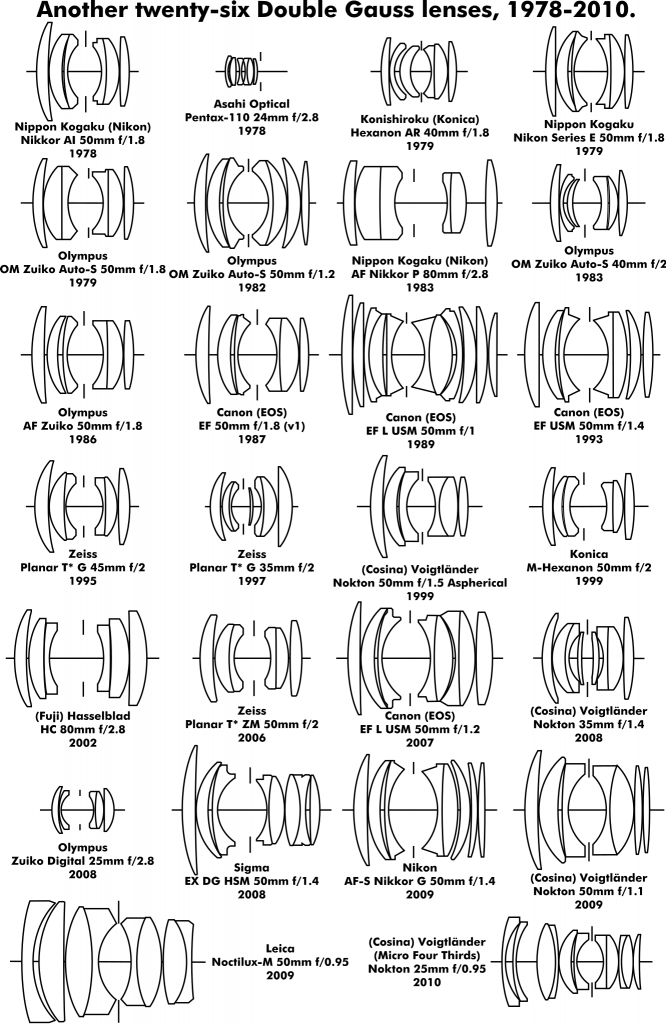
Glance at the schematics of some fairly modern lenses, you’ll almost never find a modern lens that doesn’t contain a meniscus element and an achromatic group. You’ll see Petzval’s small air space between elements to allow the designer to reduce aberrations more accurately than a cemented group would. And you’ll often find mirror-image groups around the aperture of prime lenses, like the double Gauss designs, in many lenses up to 2010 and a few even today.
In the last decade or so, the double Gauss design has become less common; the use of newer glass, computerized design techniques, and especially aspheric elements have finally replaced it. For example, the double Gauss basis is readily apparent in the Canon EF 50mm f/1.8 from 1990 (top) , but not in the newer RF 50mm f/1.8 STM from 2020 (bottom).
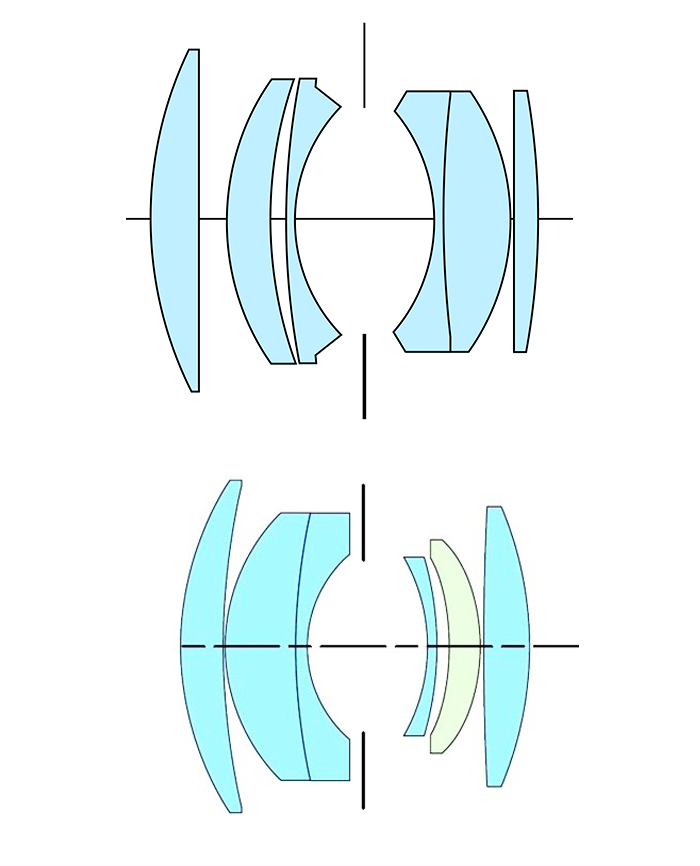
So, the double Gauss design was first suggested in the 1880s, because the grandfather of literally hundreds of lenses, many of which remain in use today – especially in cinema lenses. In fact, only one other lens, also designed pre-1900, is the basis for more modern lenses than the double-Gauss. I’ll talk about that lens in the next article.
References:
- https://en.wikipedia.org/wiki/Double-Gauss_lens
- https://en.wikipedia.org/wiki/Rapid_Rectilinear
- http://encyclopedia.jrank.org/articles/pages/1015/Evolution-of-the-Photographic-Lens-in-the-19th-Century.html
- http://image.eastmanhouse.org/files/GEH_1961_10_05.pdf
- Jonas, R. P. and Thorpe, M. D.: Double Gauss Lens Design: A Review of Some Classics. SPIE-OSA/ Vol. 6342 2012.
- Kingslake, Rudolph: A History of the Photographic Lens. Academic Press, London, 1989.
- Sasian, Jose: “Double Gauss” https://wp.optics.arizona.edu/jsasian/wp-content/uploads/sites/33/2016/03/L21_OPTI517_Double_Gauss.pdf
- Ray, Sidney: The Photographic Lens. Focal Press Ltd. 1979
Author: Roger Cicala
I’m Roger and I am the founder of Lensrentals.com. Hailed as one of the optic nerds here, I enjoy shooting collimated light through 30X microscope objectives in my spare time. When I do take real pictures I like using something different: a Medium format, or Pentax K1, or a Sony RX1R.-
DrJon
-
scht ggl
-
Kent D
-
Dimy
-
MD Yusuf
-
Roger Cicala
-
Roger Cicala
-
Athanasius Kirchner
-
Fredrick H.
-
KeithB
-
Not THAT Ross Cameron
-
MarkJ
-
Stanis?aw Matusik
-
Jim A.
-
Dave Hachey
-
Henry Winokur
-
Roger Cicala
-
Philip Leong
-
Andreas Werle
